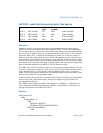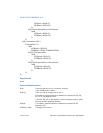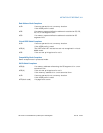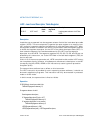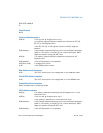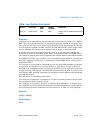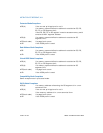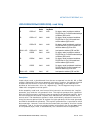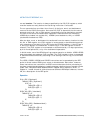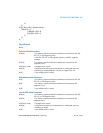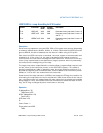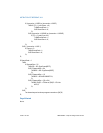
Vol. 2A 3-549
INSTRUCTION SET REFERENCE, A-M
LOCK—Assert LOCK# Signal Prefix
LOCK—Assert LOCK# Signal Prefix
Description
Causes the processor’s LOCK# signal to be asserted during execution of the accom-
panying instruction (turns the instruction into an atomic instruction). In a multipro-
cessor environment, the LOCK# signal insures that the processor has exclusive use
of any shared memory while the signal is asserted.
Note that, in later Intel 64 and IA-32 processors (including the Pentium 4, Intel Xeon,
and P6 family processors), locking may occur without the LOCK# signal being
asserted. See the “IA-32 Architecture Compatibility” section below.
The LOCK prefix can be prepended only to the following instructions and only to those
forms of the instructions where the destination operand is a memory operand: ADD,
ADC, AND, BTC, BTR, BTS, CMPXCHG, CMPXCH8B, DEC, INC, NEG, NOT, OR, SBB,
SUB, XOR, XADD, and XCHG. If the LOCK prefix is used with one of these instructions
and the source operand is a memory operand, an undefined opcode exception (#UD)
may be generated. An undefined opcode exception will also be generated if the LOCK
prefix is used with any instruction not in the above list. The XCHG instruction always
asserts the LOCK# signal regardless of the presence or absence of the LOCK prefix.
The LOCK prefix is typically used with the BTS instruction to perform a read-modify-
write operation on a memory location in shared memory environment.
The integrity of the LOCK prefix is not affected by the alignment of the memory field.
Memory locking is observed for arbitrarily misaligned fields.
This instruction’s operation is the same in non-64-bit modes and 64-bit mode.
IA-32 Architecture Compatibility
Beginning with the P6 family processors, when the LOCK prefix is prefixed to an
instruction and the memory area being accessed is cached internally in the
processor, the LOCK# signal is generally not asserted. Instead, only the processor’s
cache is locked. Here, the processor’s cache coherency mechanism insures that the
operation is carried out atomically with regards to memory. See “Effects of a Locked
Operation on Internal Processor Caches” in Chapter 7 of Intel® 64 and IA-32 Archi-
tectures Software Developer’s Manual, Volume 3A, the for more information on
locking of caches.
Opcode* Instruction 64-Bit
Mode
Compat/
Leg Mode
Description
F0 LOCK Valid Valid Asserts LOCK# signal for duration of
the accompanying instruction.
NOTES:
* See IA-32 Architecture Compatibility section below.



